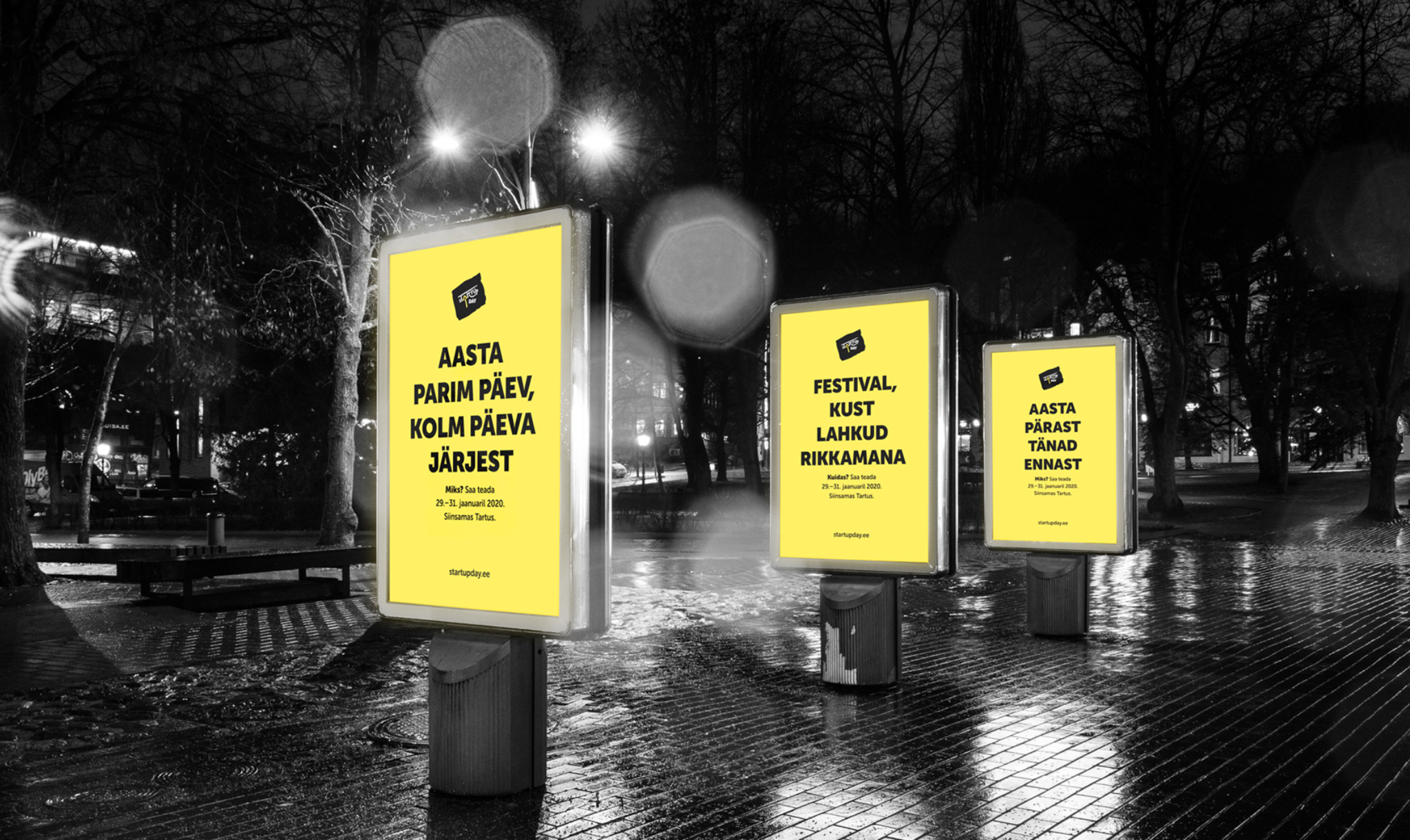
Traditional versus digital billboard – which one to choose for your next marketing campaign?
Outdoor advertising is a highly effective form of advertising which includes all types of advertising that target consumers outside their home (usually when they are in transit, on the move, or waiting). Walls, vehicle wraps, banners, street furniture, and billboards are all examples of outdoor advertising, with billboards being the most common. Billboards are the oldest form of advertising as laws and regulations were carved on tall stones already by ancient civilizations.
This article was written by Kristo Epner, Marketing & Growth Manager @ Adovinci.
Cover photo by Mikko Leo Selg.
Of course, knowing the differences between traditional and digital billboards is not sufficient for deciding what type of advertising strategy your brand needs. You need to consider several other factors when choosing your advertising strategy. For example, the size of your budget, your target audience, and the campaign message.
Traditional billboards come with many benefits:
On the downside, there are the following limitations to be considered:
Digital billboards have a variety of beneficial qualities:
However, the medium also has some limitations:
One thing is sure: billboard advertising, whether traditional or digital, continues to support brand marketing activities around the world. If billboard advertising did not work, fast food chains, theme parks, health care providers, and law firms would have stopped using them a long time ago.
Adovinci is partner of sTARTUp Day 2021.
Cover photo by Mikko Leo Selg.
What type of billboard should you choose?
Billboards are divided into two main categories: traditional (or static) and digital. Before choosing either for your outdoor ad campaign tool, you need to be aware of the strengths and weaknesses of both.Of course, knowing the differences between traditional and digital billboards is not sufficient for deciding what type of advertising strategy your brand needs. You need to consider several other factors when choosing your advertising strategy. For example, the size of your budget, your target audience, and the campaign message.
Traditional billboards – the industry standard for the past 200 years
Traditional billboards have been around since the 1800s when new printing technologies made them a widespread phenomenon of their age. Today, they still make up a large part of outdoor advertising and are, in fact, considered the norm. Usually placed along busy intersections, major roads, or other prominent places to provide maximum visibility for passers-by, traditional billboards have been successfully used by companies to increase brand awareness.Traditional billboards come with many benefits:
- Exclusivity – A major advantage of traditional billboards is exclusivity, as there is just one advertising banner on the entire surface that does not need to be shared with anyone.
- Availability – As traditional billboards still make up most of the market, it is easy to find a free spot.
- Possibility of custom ads – While a digital promotional clip has fixed dimensions, traditional billboards allow thinking “out of the box” and constructing 3D advertising banners.
- Supports long-term brand recognition.
On the downside, there are the following limitations to be considered:
- Limited content – You must pay great attention to the message and design of an ad that goes to a traditional billboard, as installation and production require time, and the content cannot be replaced quickly.
- Additional costs – There's the cost of printing and installing a banner.
- Weather resistance – If the advertising banner has to stay up for a very long time, the weather may cause unexpected damage to it.
- Waiting time for printing and installing the banner.
Digital billboards ‒ a new medium for a new era
Digital billboards are computer-controlled electronic displays that have gradually begun to take over the billboard industry. Almost all digital billboards display several ads by different companies, which are presented at predetermined intervals. In addition to outdoor public spaces, you can encounter digital billboards in various indoor locations: stalls, airports, shopping centers, sports centers, gas stations, etc.Digital billboards have a variety of beneficial qualities:
- Engagement – The rotation of different promotional clips displayed on the screen actually attracts more attention from passers-by.
- Flexibility – Promotional clips can be replaced quickly. You can broadcast a new one in under a few hours.
- Possibility to advertise during peak hours – Digital billboards allow scheduling promotional clips during peak hours or according to the season as well as target specific messages in certain areas.
- Shorter ad display time avoids saturation.
- Moving effects, bright colors, and the video themselves can be very eye-catching.
- Some digital billboards also allow broadcasting social media posts.
However, the medium also has some limitations:
- Higher price
- Sharing advertising space with others – While the rotation of promotional clips attracts attention, sharing the screen with other ads may mean that your clip won’t stand out.
- The promotional clip lasts 10 seconds – a short time for a person to notice namely your ad.
- High demand may affect the availability of the advertising site or extend the waiting time.
A proven method for building brand awareness
Both traditional and digital billboards have valuable advantages, and the nuances of the company’s marketing goals determine whether to prefer one or the other or a combination of both. Billboards can act as a secret marketing weapon for companies that want to increase brand awareness, target audiences with simple messages, and implement quick calls for action.One thing is sure: billboard advertising, whether traditional or digital, continues to support brand marketing activities around the world. If billboard advertising did not work, fast food chains, theme parks, health care providers, and law firms would have stopped using them a long time ago.
Adovinci is partner of sTARTUp Day 2021.
Articles you might also like:

sTARTUp Day Classics #3: Hermione Way on Learnings from 10 Years of Marketing in Startups
20.11.2025
In this episode of the sTARTUp Day Podcast, we look back at one of the most insightful keynotes from sTARTUp Day 2020....

How to grow with a limited budget? Growth strategies from Estonian top startups
22.07.2025
Startups often have a one-person marketing team and a minimal budget – facing investors who expect growth every month. That’s why they...